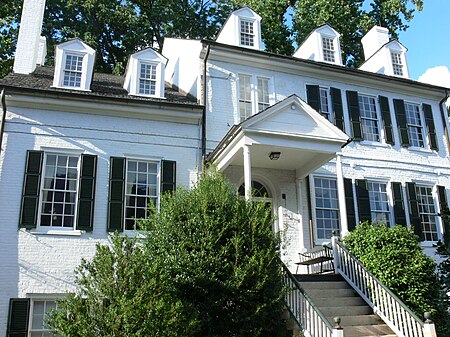Reveille (Richmond, Virginia)
Federal architecture in VirginiaHouses completed in 1806Houses in Richmond, VirginiaHouses on the National Register of Historic Places in VirginiaNational Register of Historic Places in Richmond, Virginia ... and 1 more
Richmond, Virginia Registered Historic Place stubs

Reveille, also known as the Brick House, is a historic home located in Richmond, Virginia. The house consists of three sections. The main 2+1⁄2-story house dates to about 1806; the 1+1⁄2-story west wing dates to 1839; and a rear kitchen wing was added to the west wing in 1920. The house is an example of an early 19th-century Federal style country residence. In 1950 the property and house were acquired by the Reveille United Methodist Church.It was listed on the National Register of Historic Places in 1979.
Excerpt from the Wikipedia article Reveille (Richmond, Virginia) (License: CC BY-SA 3.0, Authors, Images).Reveille (Richmond, Virginia)
North Ashlawn Drive, Richmond
Geographical coordinates (GPS) Address Nearby Places Show on map
Geographical coordinates (GPS)
| Latitude | Longitude |
|---|---|
| N 37.561388888889 ° | E -77.495555555556 ° |
Address
North Ashlawn Drive
23221 Richmond
Virginia, United States
Open on Google Maps







